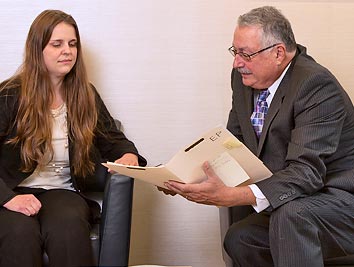SE HABLA ESPAÑOL
How to Protect Your Loved One’s Inheritance in Trust While Minimizing Conflict
by: Jeremy Rachlin
2024
by: Jeremy Rachlin
Category: Estates and Trusts

A common tool used by many of our estate planning clients is the use of a trust to protect a loved one’s inheritance.
Where a trust is established, the inheritance is retained in trust for the benefit of a designated beneficiary, rather than distributed to that beneficiary outright (under the beneficiary’s control).
By taking this trust-based approach rather than an outright distribution, clients can accomplish multiple objectives. The beneficiary retains use and benefit of their inheritance while the inheritance remains prudently managed by the trustee. Moreover, the inheritance can be shielded from creditors, divorce, or irresponsible decisions.
But this decision rooted in good intentions may create significant conflict downstream. The good news is that with good planning, you can avoid this conflict.
The Potential Problem
When you direct that a beneficiary’s inheritance be held in trust, you designate a “trustee” of that trust.
The trustee is the person or entity who has a fiduciary duty to responsibly manage and invest the trust. The trustee is also the person or entity who has the obligation to field requests for distribution from the beneficiary and timely respond.
Many clients choose to name a family member as the trustee of a trust. It may be the beneficiary’s aunt, uncle, cousin, or sibling. Clients often prefer this route because they feel it can avoid unnecessary cost or interference versus if a professional fiduciary (such as a bank or trust company) served as trustee.
Although a trust can be liberally drafted in favor of a trustee making distributions, it does not change two important facts.
First, the beneficiary of the trust must affirmatively ask the trustee for a distribution from their trust. This can create a very uncomfortable situation between family members where a beneficiary feels like they are going “hat in hand” to the trustee requesting money.
Second, the trustee may have to reject the beneficiary’s request for a distribution. The trustee does have a duty to prudently manage the money and protect the trust from wasteful spending. If the trustee feels that the beneficiary’s request is frivolous or wasteful, the trustee may have an obligation to say no.
The Solutions
Clients who are considering retaining a beneficiary’s inheritance in trust would be wise to take a few approaches to minimize potential conflict downstream:
- The client could name a professional fiduciary (such as a bank or trust company) as the trustee, rather than naming a family member. The upside is that there is never a family member standing in the way of a beneficiary and his/her perceived right to money. The downside can be cost. Professional fiduciaries do charge for their services. But sometimes this compensation is a small price to pay for family peace.
- The client could give the trustee flexibility to appoint either a co-trustee or to resign and appoint a successor trustee. This should be done in all trusts, but it is especially important in situations where a family member will be taking on the role of trustee. If the situation is peaceful between the beneficiary and trustee, the trustee can elect to retain the role. If the situation takes a turn for the worse, the trustee has the option to resign in favor of another individual or professional trustee or may name that person or professional as a co-trustee and delegate certain decisions to the co-trustee.
- The client could name a “Protector” in their trust. The Protector is someone who has oversight over the trust and trustee. The trust can grant the Protector a right to receive statements from the trustee and other information about the administration and management of the trust. The trust can also grant the Protector the right to remove and replace a Trustee. The Protector can be granted – but caution should be given here – authority to referee and resolve disputes between a beneficiary and trustee. Naming a Protector can give clients who are considering naming a professional trustee reassurance that another family member will continue to monitor the administration of the trust and that the professional trustee must answer to the Protector.
Concluding Thoughts
Housing a beneficiary’s inheritance in a trust is sometimes a very important tool in preserving and protecting the transfer of wealth. A family’s hard-earned nest egg can be protected from creditors, divorce, or irresponsibility. However, careful attention should be given to the possibility of conflict downstream. The good news is that, with good planning, a well-drafted document can minimize the potential for conflict.
If you’d like to chat about protecting your loved one’s inheritance, please contact Jeremy Rachlin at (301) 656-1177, or jrachlin@bulmandunie.com to schedule a discussion.
SE HABLA ESPAÑOL
Talk to an Experienced Attorney
301-656-1177





0 Comments